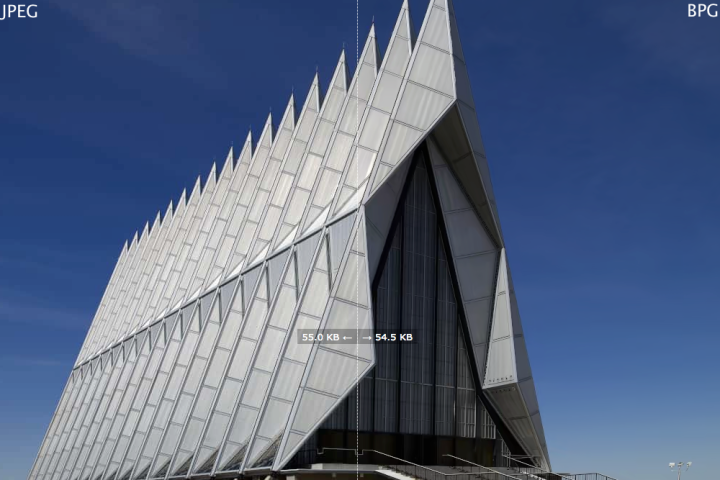
But JPEG is far from perfect. You may have noticed small, blocky irregularities in JPEG images. These compression artifacts are a result of how the format’s algorithm reduces file size, and they can be very distracting. They stand out the most in images that have very fine, high-contrast detail, such as small text or the hair of an animal against a contrasting background. Certain gradients also make these artifacts easy to spot, particularly in images that are aggressively compressed.
Fabrice Bellard, an award-winning French programmer best known for QEMU, a hardware virtualization program, and FFmpeg, a cross-platform multimedia codec library, thinks it is time for a change. He’s proposed a new format called Better Portable Graphics, or BPG, that offers numerous benefits over the aging JPEG format. Perhaps the most important is an improved compression ratio, which means the format delivers greater quality at any particular file size.

You can see the difference for yourself with this comparison tool. We recommend the Air Force Academy Chapel, Soccer Players, and Swallowtail test images at small and medium file size for the most obvious difference. Images included in BPG appear sharper than JPEG and don’t have the blocky artifacts common in the latter. When viewing the Air Force Academy photo, for example, you’ll notice that JPEG introduces fuzzy lines around the structure that don’t appear in the BPG version.
BPG manages its quality through use of the same HEVC codec that is used for x265/H.265 video. In other words, a BPG photo is essentially the same as taking a single frame out of said video. It gives BPG the ability to handle 14 bits per color channel and adds support for an alpha channel, an omission from the JPEG format that’s become increasingly annoying as the years drag on. BPG can even be decoded in hardware by anything that can decode H.265, which could be a boon for viewing high-quality shots on a mobile device.
So when should you expect to see BPG images on your favorite website? That’s a tough question to answer. The new file format, while clearly superior to JPEG, is new. No browsers or image editors currently offer native support. Getting companies to add the feature is a chicken-and-egg problem; no one will be publishing BPG images until there’s support, but there’s no reason to add support until BPG begins to appear on websites.
For now, then, BPG is just an excellent novelty, a glimpse of a future that we’ve not yet achieved. Personally, I hope the file format does receive support in the near future. Its increase in quality is apparent, and its adoption could let photographers share high-quality shots without resorting to formats like PNG and BMP — which deliver clarity at the cost of massive file size.


